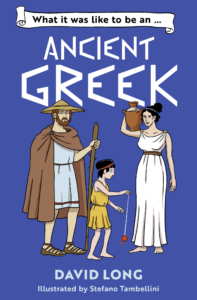Why I Write Children’s Non-Fiction by David Long
On the blog today, we welcome David Long, who provides some insight into writing non-fiction for children.

Why I Write Children’s Non-Fiction
Having written nearly 70 books it still seems obvious to me that, after 25 years as a journalist, I was bound to end up writing non-fiction. You never lose that urge to find out more, to discover stuff you didn’t know, and to understand people (living or dead) and lives unlike your own. One also realizes, as the parent of two boys, that when it comes to learning more about the world a child can’t start early enough.
Also I’ve seen for myself how often children who don’t particularly enjoy reading stories (or even having stories read to them) can be switched on to books by facts. Admittedly, as an historian, it is sometimes necessary to smuggle these facts on to the page by disguising them as entertainment; but, if this is done well enough, one quickly sees that most children genuinely love to learn.
During school visits and festival appearances I’m continually impressed by the level of interest shown by my audiences, and amazed by the questions I get asked. So often these demonstrate not just that the children are paying attention but that they are really thinking about the subject and often – and best of all – trying to work out how something which happened hundreds of years ago can help them understand the world they inhabit today.
Here illustrations help a lot because they can draw in even the most reluctant reader. Happily now is a bit of a golden era for book illustration and in recent years I’ve been fortunate to work with some fantastic collaborators whose talent and imagination really bring my words alive.

My latest book for Barrington Stoke is WHAT IT WAS LIKE TO BE AN ANCIENT GREEK. It’s my ninth or tenth time working with Stefano Tambellini so I know that his witty and detailed images mean a child will come away having learned something even if they never read the words. Luckily for me, and I’ve seen this many times, the pictures pique their interest so the next time they pick up the book they read it – often more than once.
Stefano and I try to make our books fun, of course, but there’s serious intent in everything we do. Non-fiction books help build a child’s vocabulary and language skills. They encourage children to concentrate and learn so they support schoolwork even when there’s no direct link between a book and the curriculum.
Nonfiction is also useful when it comes to helping youngsters make important real-world connections, and they instill in young minds a genuine desire to know more. Not just about historical subjects, although personally I’ve always found these irresistible, but in general. Knowledge after all is power, and nothing better equips a child with the skills and confidence they need to navigate the world than facts.



